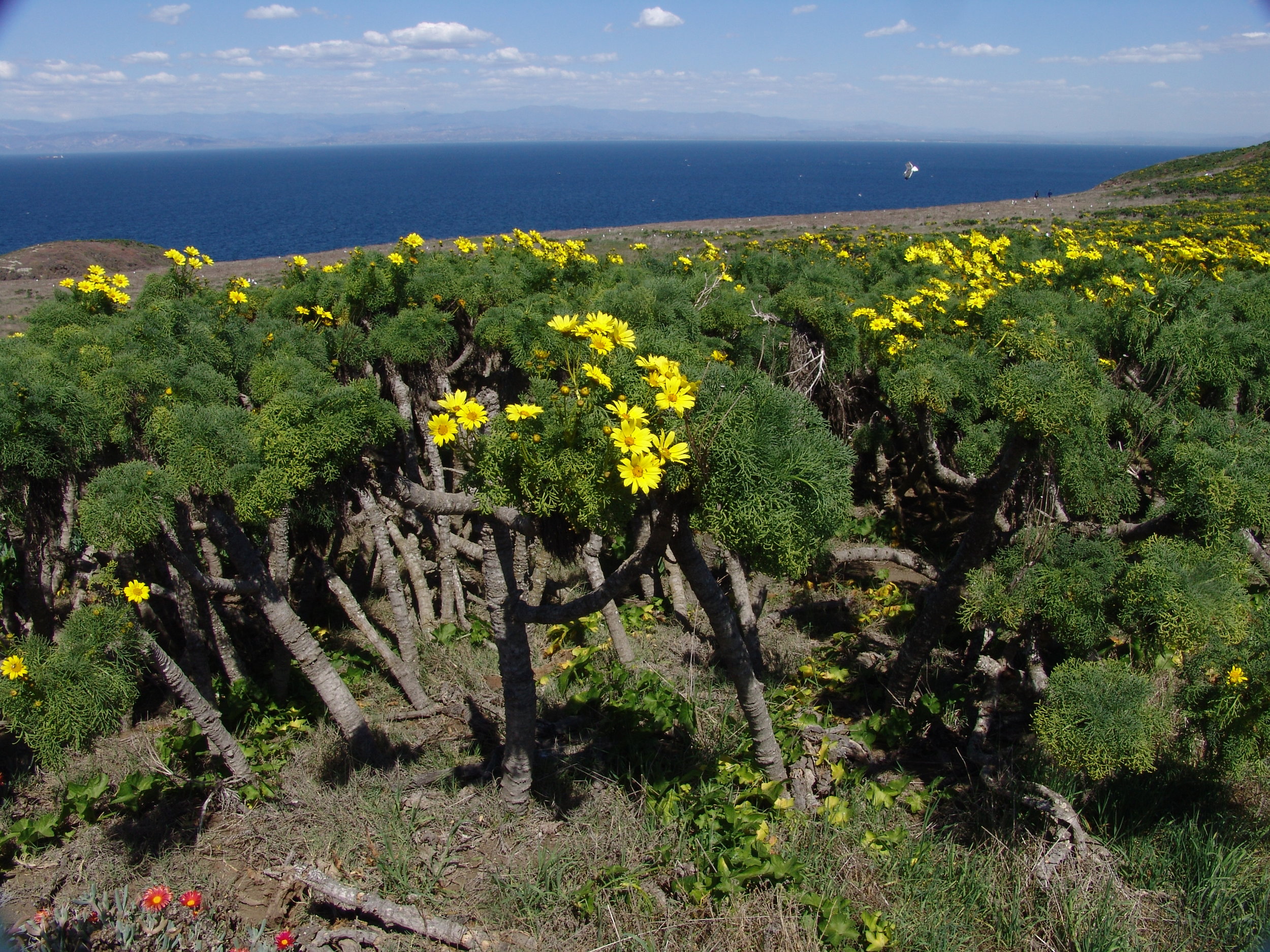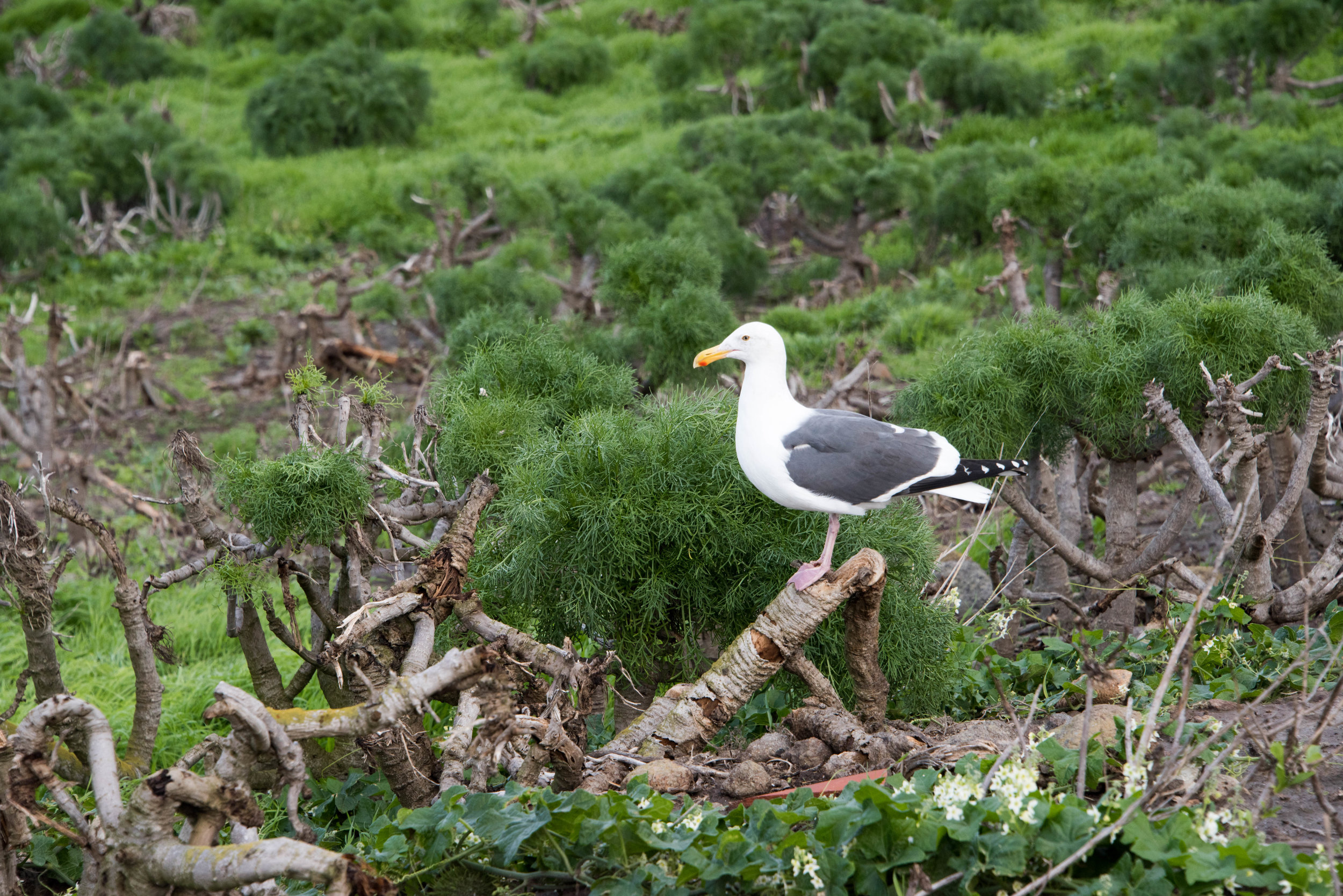Giant coreopsis (Coreopsis gigantea) is an enigmatic poster-child of the Channel Islands due to its large size and vibrant colors. The big, floppy daisy-like petals and verdant green leaves can often be seen framing the edges of pictures taken at Inspiration Point on Anacapa Island in the spring.
The large shrub is prolific on all of the Channel Islands, but can also be found along the coast from Central California down to Baja California. It’s found mostly along sea bluffs, coastal dunes, and hillsides in community with other plants like seacliff buckwheat, coast goldenbush, and red sand verbena.
The giant coreopsis is a succulent, yet woody plant. It has thick, strong stems that can grow to a towering height of eight feet. The plants’ large size can be attributed to the ‘islandification’ effect – which causes a significant change in size due to the availability of resources on an island. (Think of wooly mammoths shrinking into pygmy mammoths because of the lack of food and space on the islands). Without widespread herbivores on the islands, giant coreopsis was able to evolve to grow larger and more succulent without the threat of being eaten.
Despite its size, giant coreopsis is often recognized by its bright, highlighter-yellow flowers. In the spring, vast fields of these flowers can stretch to the horizon on islands like San Nicolas and Anacapa. With Anacapa Island hosting the largest protected breeding colony of western gulls in the world, those fields of giant coreopsis play an important role in providing shelter for nesting birds in the spring. For these reasons, Anacapa Island in the spring is truly a spectacle to behold, and one that every resident of the Central Coast should try to experience at least once.
As the plants dry out in the summer, their flowers wilt to a soft brown color and produce seeds that resemble ticks – giving the plant its other maligned nickname of giant tick-seed. Through the dry summer and fall, these drought-tolerant perennial plants stand dormant in wait for the next season’s rains.






